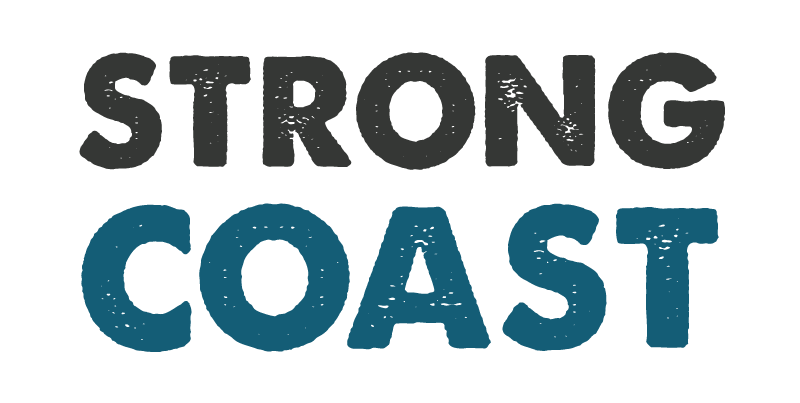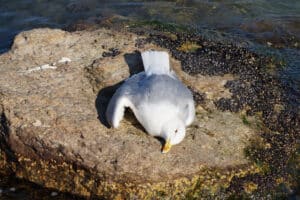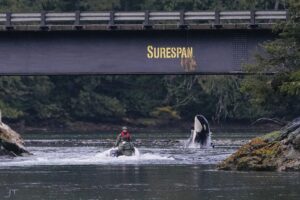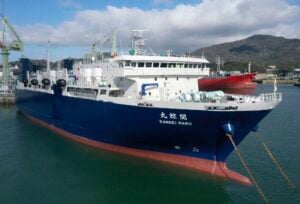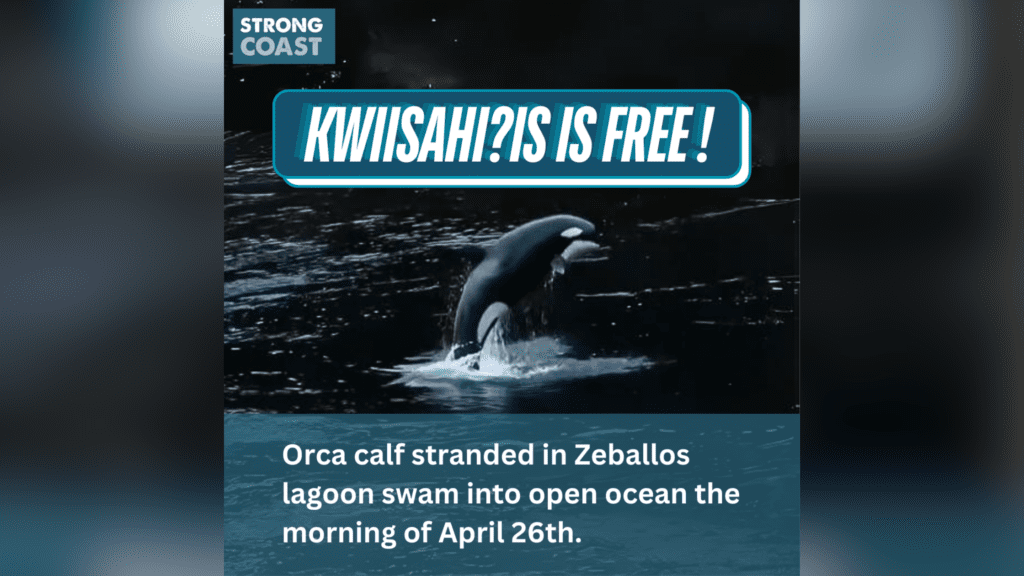
The young orca trapped in the Zeballos lagoon has finally escaped after more than a month of being stranded. The orca’s freedom came early on the morning of April 26, following intensive efforts by rescue teams to guide her past a sandbar obstructing the lagoon’s exit. Her successful escape occurred during high tide at approximately 2.30 AM, after most of the people on the ground had left the scene.
Remembering Spong
Brave Little Hunter has been in the lagoon ever since she and her pregnant mother became stranded there on March 23. Her mother, named Spong, ended up beached on her side on a sandbar—the same one Brave Little Hunter had to pass to escape the lagoon. Locals quickly gathered to try and flip and drag her back into the water, but high tide soon approached and Spong subsequently drowned.
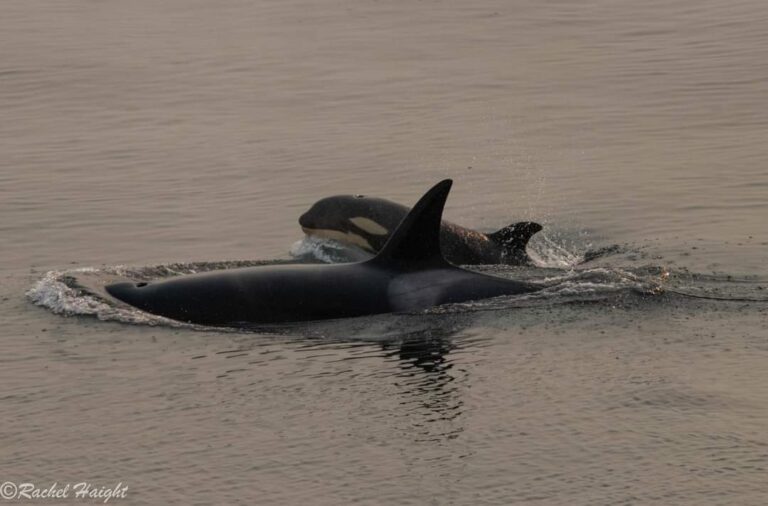
The DFO called Spong’s beaching the result of “an aggressive predation event” after it was discovered that there were remnants of seal in her mouth.
A mourning ceremony was conducted by members of the Ehattesaht First Nation to send off Spong.
Brave Little Hunter’s Journey
Over the past weeks, various rescue attempts were made to facilitate Brave Little Hunter’s escape. One attempt involved constructing a “hukilau,” which is a net used in traditional Hawaiian fishing. The plan was to lure Brave Little Hunter into the net using seal meat, transfer her to a sling via crane, and then transport her by truck to a second location where she would eventually be lifted into a boat and released into the open ocean.
Rescuers were optimistic about this plan as her pod, which includes her maternal grandmother, had been spotted nearby. However, Brave Little Hunter managed to evade rescuers. After multiple failed rescue attempts, it was speculated that Brave Little Hunter was hesitant to leave the lagoon as she was still grieving her mother.
American orca rescuer Jeff Foster, who used to catch orcas for aquariums before he had a change of heart, offered advice to local rescuers that they should build rapport with Brave Little Hunter without encouraging her dependence on them, and offered to come to Zeballos for free to help in the effort.
Brave Little Hunter’s Future
Following the calf’s exit from the lagoon, which included swimming past the sandbar her mother became beached on and under the Zeballos Causeway, a feat only possible at high tide, a Marine Mammal Rescue team, which includes whale experts and members from the Department of Fisheries and Oceans, is tracking the orca to ensure she reunites with her pod.
Bay Cetology, which had assisted in the rescue efforts over the past few weeks, has developed AI technology capable of tracking orcas by identifying individuals through photos. Founder Jared Towers said the technology could be used to reunite the calf with its pod.
According to Towers, the program has already successfully identified the location of Brave Little Hunter’s pod thanks to photos offered up by the public.
The Ehattesaht First Nation has advised that the public should keep a distance from the area during this critical time to ensure a smooth transition for the orca back into its natural habitat.
Updates on this ongoing situation are regularly posted on the Strong Coast Facebook page. Make sure you follow us for the latest developments.
For more details on Brave Little Hunter’s escape, check out this article by The Skeena.
